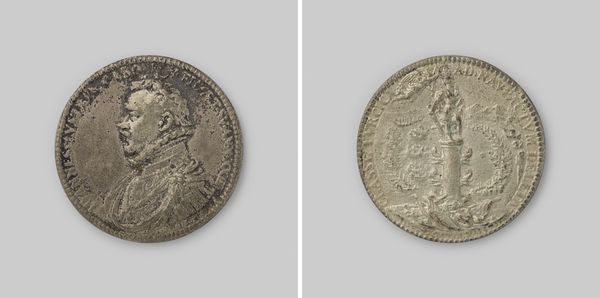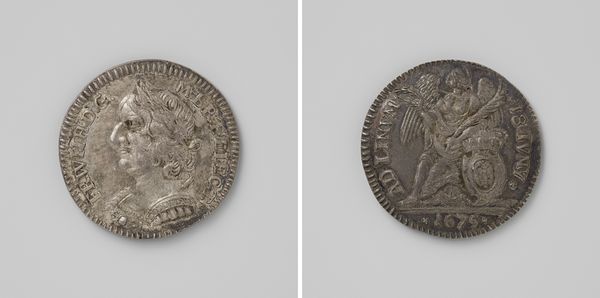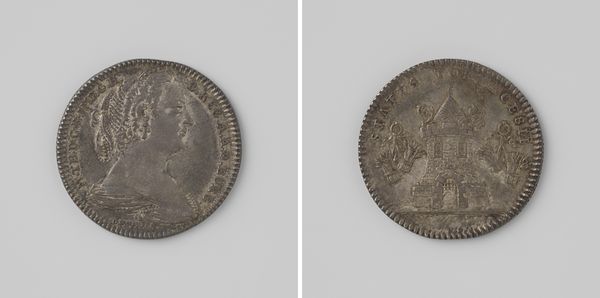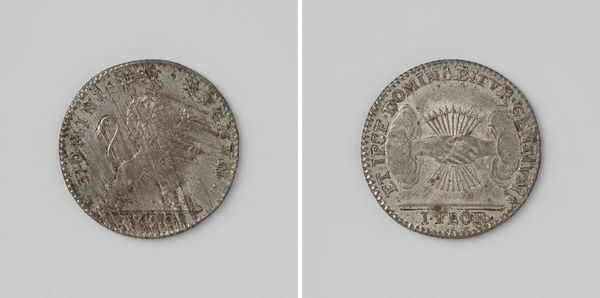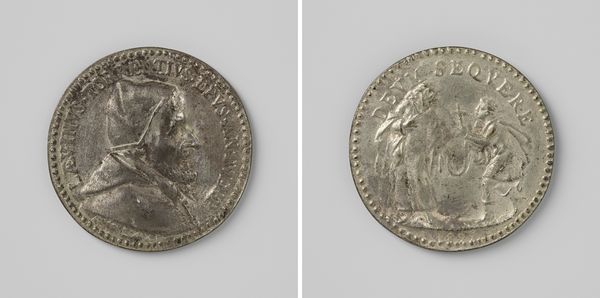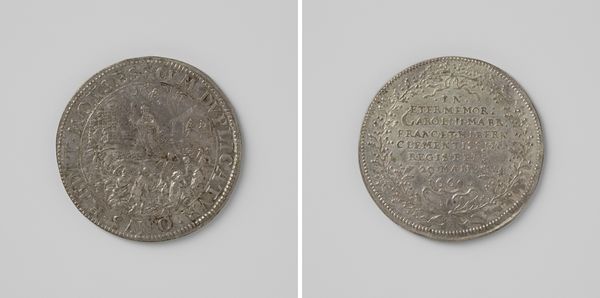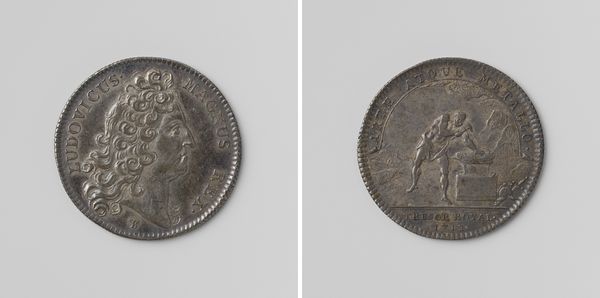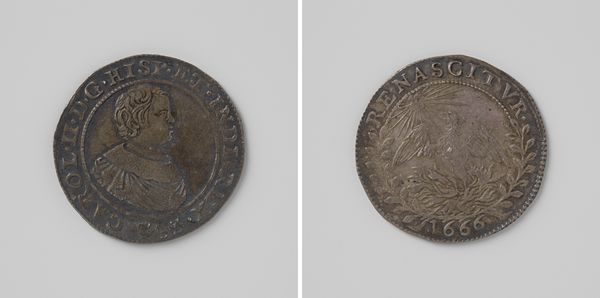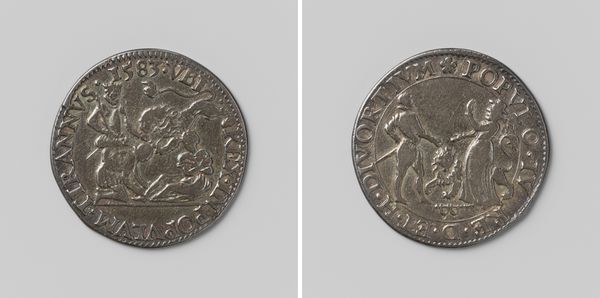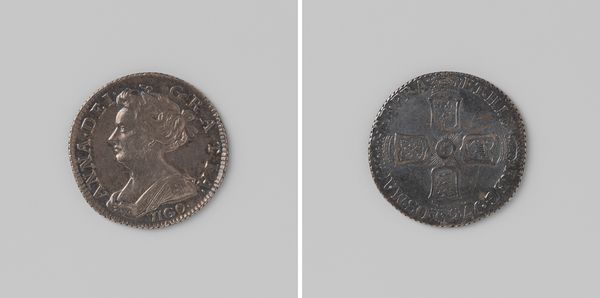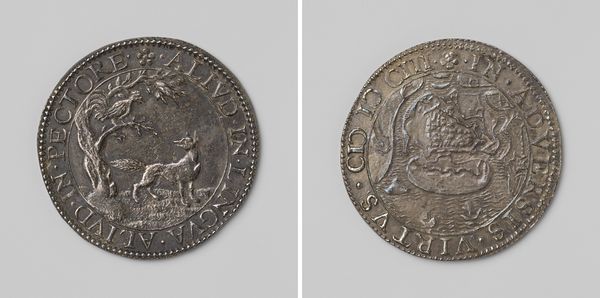
Maximiliaan II Emanuel, keurvorst van Beieren, verdediger van de Duitse vrijheid 1703
0:00
0:00
metal, relief, sculpture
#
portrait
#
baroque
#
metal
#
relief
#
sculpture
Dimensions: diameter 2.6 cm, weight 3.95 gr
Copyright: Rijks Museum: Open Domain
Curator: Here we have a fascinating relief in metal. It’s a piece crafted by Philippe Roëttiers in 1703, titled "Maximiliaan II Emanuel, keurvorst van Beieren, verdediger van de Duitse vrijheid"—Maximilian II Emanuel, Elector of Bavaria, defender of German Liberty. Editor: My first impression is one of constrained power. It's small, yet the ambition of the title suggests something grander, almost propagandistic. Curator: Precisely! It’s crucial to understand Maximilian's role at the time. He was a key player in the War of the Spanish Succession, and this piece serves as a kind of political declaration. Roëttiers was likely working under commission to portray him as a champion. How do you read the symbols here? Editor: Well, immediately the laurel wreath strikes me as a classic symbol of victory and honor, encasing the inscription. The portrait itself is styled in the baroque fashion of powerful leaders at the time, complete with wig and an almost superhuman calmness. This reinforces the image of unwavering authority. But on something the size of a coin almost feels self-aggrandizing to me. Curator: That perceived contrast between scale and claim might just underscore some of the historical contradictions. Maximilian sought to increase his own power through complex alliances; this coin is designed to consolidate his image amidst shifting loyalties and the dynamics of war. Is this an object for Bavarians alone? What impact would it have across enemy lines? How was liberty being framed? Editor: I notice too the careful inscription around the portrait. This text becomes a frame around Maximilian, literally defining him, his territory, and aspirations. It also locks him into that role, both literally and figuratively trapping Maximilian with what's expected of a “defender.” The image would have served to impress a specific social, political and, perhaps even personal circle. Curator: Yes. The metal lends permanence, creating a kind of timeless image. Yet, it's caught in very particular political winds of 1703. That's the central tension, isn't it? Editor: Absolutely. Thinking about this has encouraged me to view objects beyond their aesthetic appeal. It underlines how meaning can be deeply interwoven with historical context, political strategies and a good dose of human ambition. Curator: And how a tiny object can become an ambitious instrument.
Comments
No comments
Be the first to comment and join the conversation on the ultimate creative platform.
